What is Market Failure? | Economics for Grade 12 PDF Download
Market Failure Defined
- In a free market, the price mechanism determines the most efficient allocation of scarce resources in response to the competing wants and needs in the marketplace
- Scarce resources are the factors of production (land, labour, capital, enterprise)
- Free markets often work very well
- However, there is sometimes a less than optimum allocation of resources from the point of view of society. This is called Market Failure
- Sometimes there is an over-provision of goods/services which are harmful (demerit goods) & therefore an over-allocation of the resources (factors of production) used to make these goods/services e.g. cigarettes
- Sometimes there is an under-provision of the goods/services which are beneficial (public goods & merit goods) & therefore an under-allocation of the resources (factors of production) used to make these goods/services e.g. schools
- Sometimes the market causes a lack of equity (inequality) - the rich get richer and the poor get relatively poorer
- Sometimes, environmental damage occurs during the production or consumption of a good/service
- In each of these cases, from society’s point of view there is a lack of efficiency in the allocation of resources
Private, Social & External Costs
- Externalities occur when there is an external impact on a third party not involved in the economic transaction between the buyer & seller
- These impacts can be positive or negative & are often referred to as spillover effects
- These impacts can be on the production side of the market (producer supply) or on the consumption side of the market (consumer demand)
- External costs occur when the social costs of an economic transaction are greater than the private costs
- A private cost for the producer, consumer or government is what they actually pay to produce or consume a good/service e.g. a consumer pays $9 for a McDonald's meal
- An external cost is the damage not factored into the market transaction e.g. the consumer throws their McDonalds packaging onto the street & the Government has to hire cleaners to collect the litter
- The social cost includes both the private cost & the cost to society
- It is a better reflection of the true cost of an economic transaction
- Social cost = private cost + external cost
Private, Social & External Benefits
- External benefits occur when the social benefits of an economic transaction are greater than the private benefits
- A private benefit for a consumer, producer or government is what they actually gain from producing or consuming a good/service e.g. a bee farm gains the private benefit of the income from selling their honey
- An external benefit (positive externality) is the benefit not factored in to the market transaction e.g. The bees from the bee farm pollinate the nearby apple orchards
- The social benefit includes both the private benefit & the external benefit to society
- It is a better reflection of the true benefit of an economic transaction
- Social benefit = private benefit + external benefit
Causes & Consequences of Market Failure
- Market Failure occurs when free market activity results in a less than optimum allocation of resources from the point of view of society
The Causes & Consequences of Market Failure
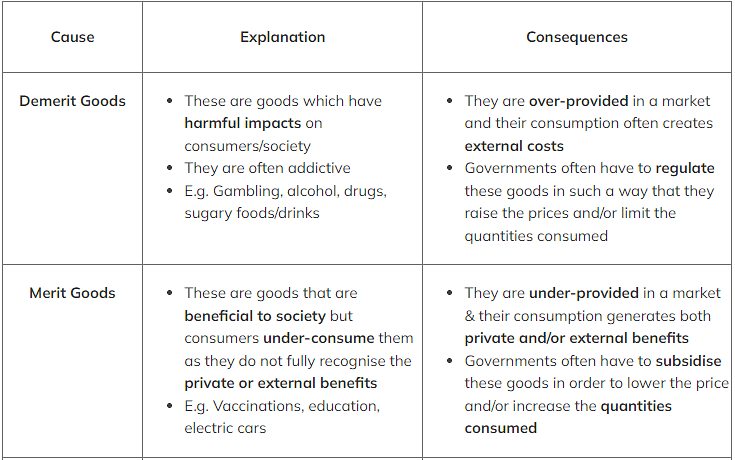
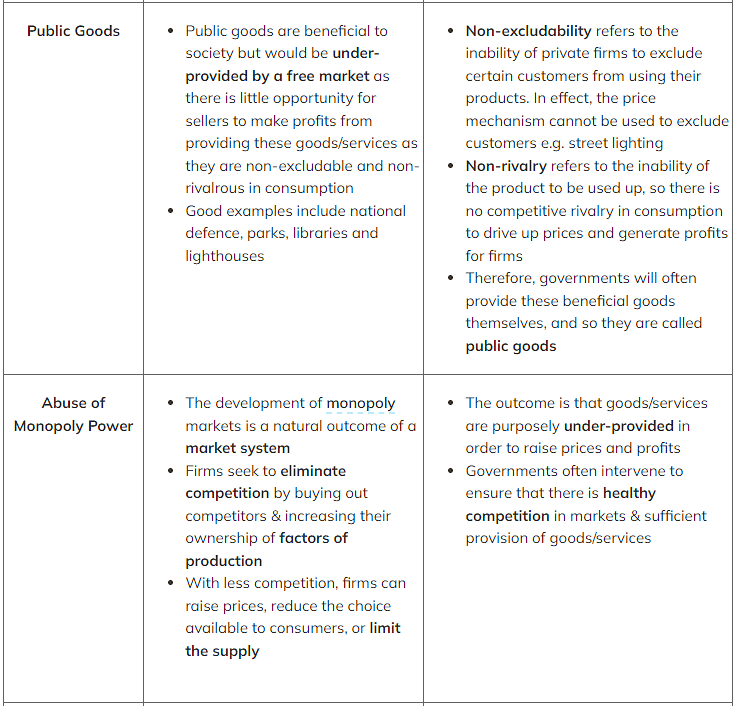
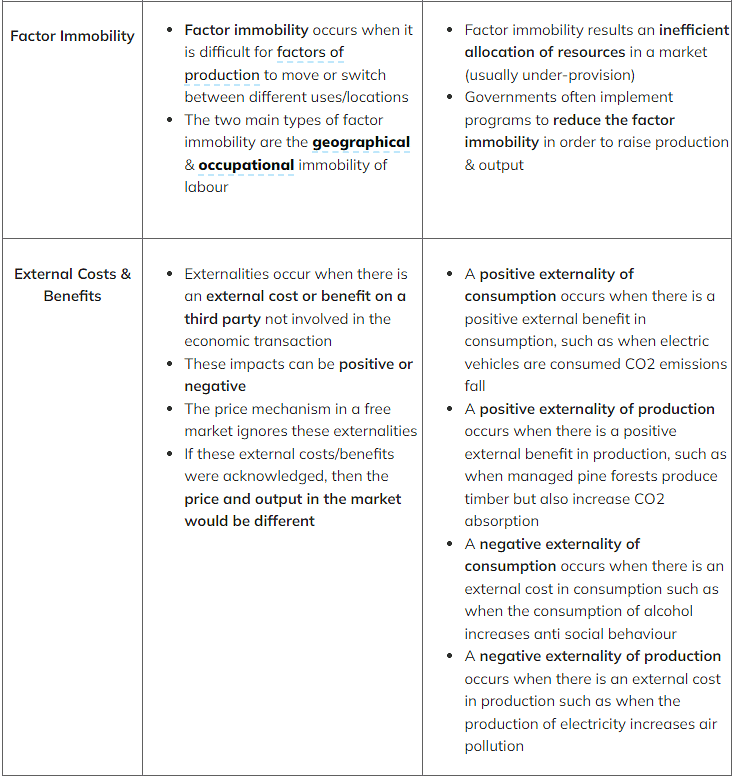
Intervention to Address Market Failure
- Four of the most commonly used methods to address market failure in markets are indirect taxation, subsidies, maximum prices, & minimum prices
- Additional methods of intervention include regulation, nationalisation, privatisation, & State provision of public goods
Maximum Prices
- A maximum price is set by the government below the existing free market equilibrium price & sellers cannot legally sell the good/service at a higher price
- Governments will often use maximum prices in order to help consumers. Sometimes they are used for long periods of time e.g. housing rental markets. Other times they are short-term solutions to unusual price increases e.g. petrol
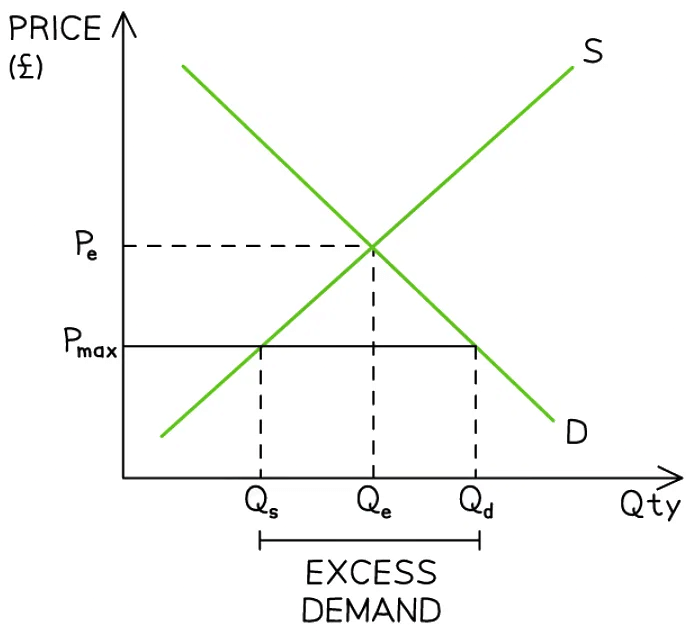
Diagram Analysis
- The initial market equilibrium is at PeQe
- A maximum price is imposed at Pmax
- The lower price reduces the incentive to supply & there is a contraction in QS from Qe → Qs
- The lower price increases the incentive to consume & there is an extension in QD from Qe → Qd
- This creates a condition of excess demand QsQd
The Advantages & Disadvantages of Using Maximum Prices
Minimum Prices
- A minimum price is set by the government above the existing free market equilibrium price & sellers cannot legally sell the good/service at a lower price
- Governments will often use minimum prices in order to help producers or to decrease consumption of a demerit good e.g. alcohol
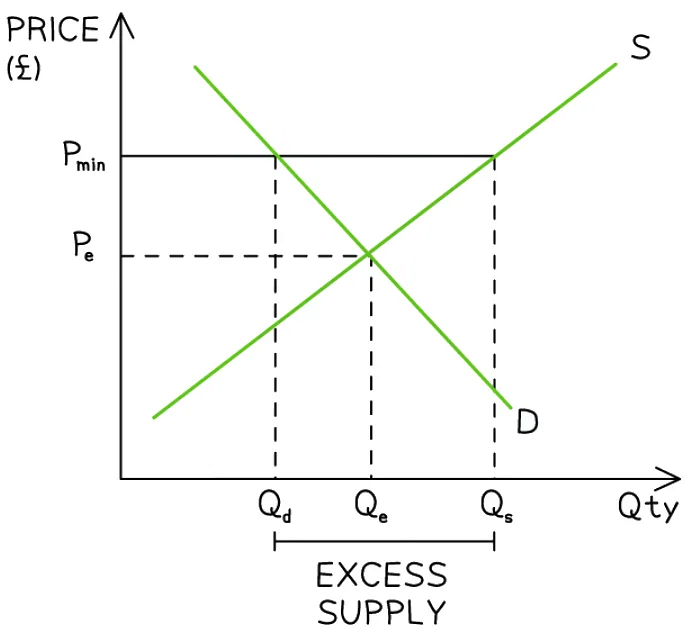
Diagram Analysis
- The initial market equilibrium is at PeQe
- A minimum price is imposed at Pmin
- The higher price increases the incentive to supply & there is an extension in QS from Qe → Qs
- The higher price decreases the incentive to consume & there is a contraction in QD from Qe → Qd
- This creates a condition of excess supply QdQs
The Advantages & Disadvantages of Using Minimum Prices In Product Markets
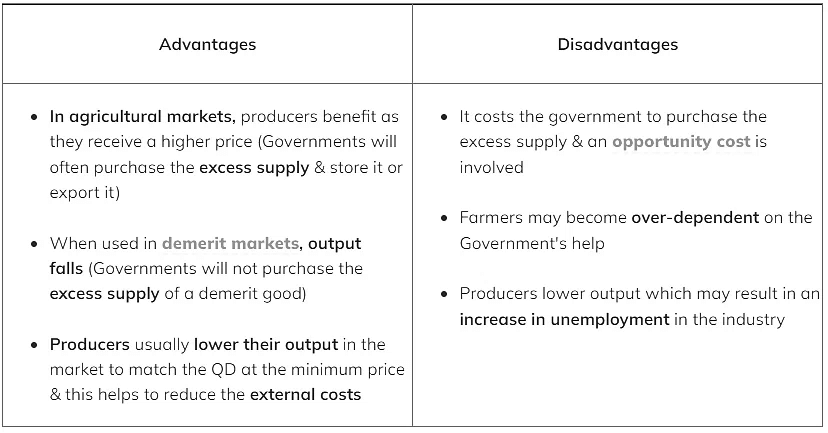
Minimum Prices in Labour Markets
- Minimum prices are also used in the labour market to protect workers from wage exploitation
- These are called national minimum wages
- A national minimum wage (NMW) is a legally imposed wage level that employers must pay their workers
- It is set above the market rate
- The minimum wage/hour varies based on age
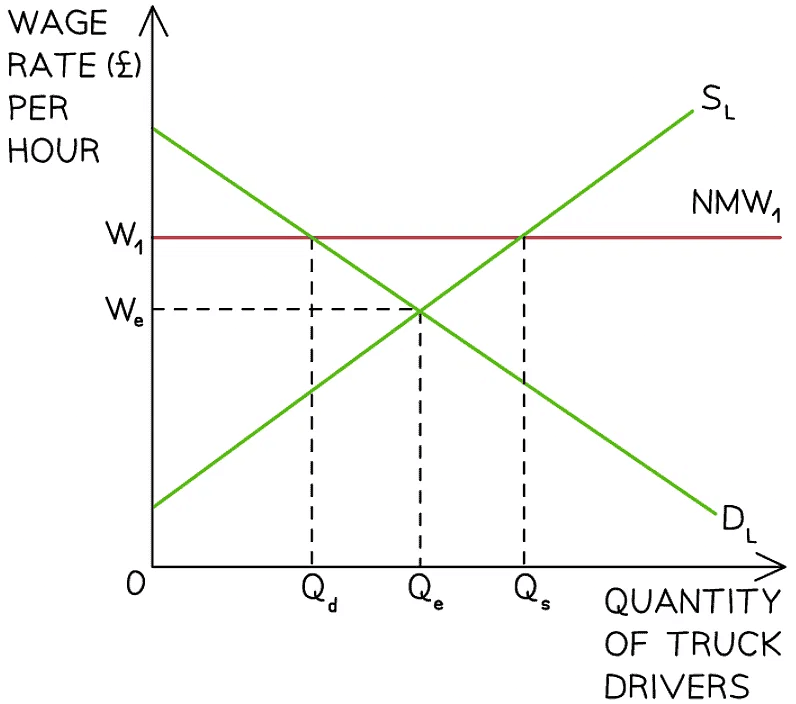
Diagram Analysis
- The demand for labour (DL) represents the demand for workers by firms
- The supply of labour (SL) represents the supply of labour by workers
- The market equilibrium wage & quantity for truck drivers in the UK is seen at WeQe
- The UK government imposes a national minimum wage (NMW) at W1
- Incentivised by higher wages, the supply of labour increases from Qe to Qs
- Facing higher production costs, the demand for labour by firms decreases from Qe to Qd
- This means that at a wage rate of W1 there is excess supply of labour & the potential for unemployment equal to QdQs
The Advantages & Disadvantages of a Minimum Wage In Labour Markets
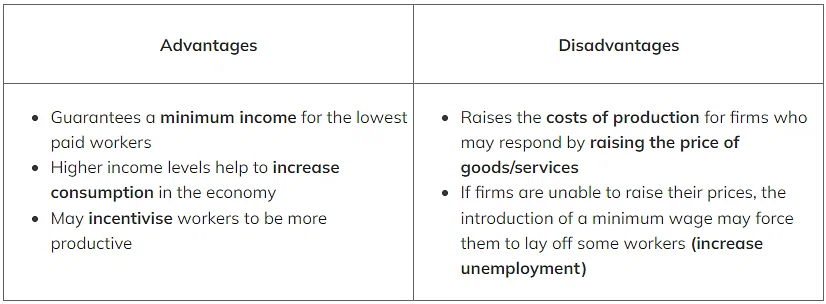
Indirect Taxation
- An indirect tax is paid on the consumption of goods/services
- It is only paid if consumers make a purchase
- It is usually levied by the government on demerit goods to reduce the quantity demanded (QD) and/or to raise government revenue
- Government revenue is used to fund government provision of goods/services e.g education
- Indirect taxes are levied by the government on producers. This is why the supply curve shifts
- Producers and consumers each pay a share (incidence) of the tax
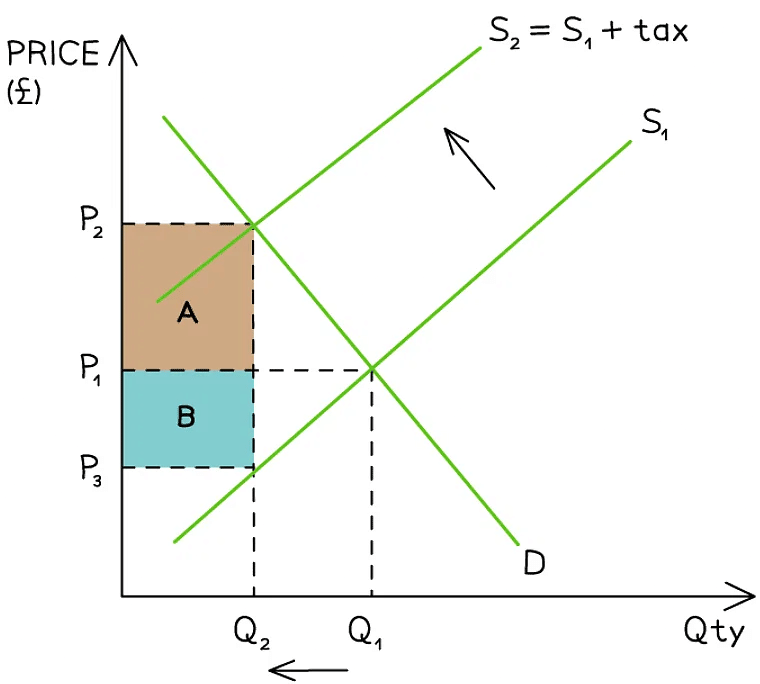
The impact of an indirect tax is split between the consumer (A) & the producer (B)
Diagram Analysis
- The government places a specific tax on a demerit good
- The supply curve shifts left from S1→S2 by the amount of the tax
- The price the consumer pays has increased from P1 before the tax, to P2 after the tax
- The price the producer receives has decreased from P1 before the tax to P3 after the tax
- The government receives tax revenue = (P2-P3) x Q2
- The consumer incidence (share) of the tax is equal to area A: (P2-P1) x Q2
- The producer incidence (share) of the tax is equal to area B: (P1-P3) x Q2
- The QD in this market has decreased from Q1→Q2
- If the decrease in QD is significant enough, it may force producers to lay off some workers
The Advantages & Disadvantages Of Indirect Taxes

Producer Subsidies
- A producer subsidy is a per unit amount of money given to a firm by the government
- To increase production
- To increase the provision of a merit good
- The way a subsidy is shared between producers & consumers is determined by the price elasticity of demand (PED) of the product
- Producers keep some of the subsidy & pass the rest on to the consumers in the form of lower prices
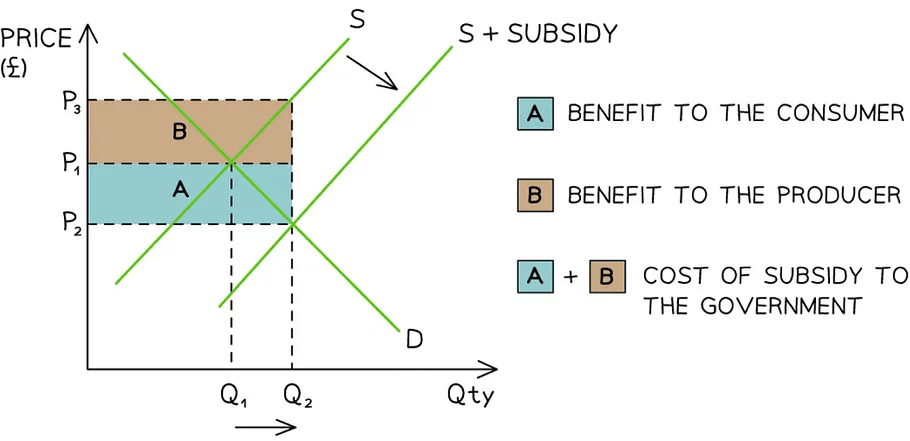
- Producers keep some of the subsidy & pass the rest on to the consumers in the form of lower prices
A diagram which demonstrates the cost of a subsidy to the government (A+B) and the share received by the consumer (A) & producer (B)
Diagram Analysis
- The original equilibrium is at P1Q1
- The subsidy shifts the supply curve from S → S + subsidy:
- This increases the QD in the market from Q1→Q2
- The new market equilibrium is P2Q2
- This is a lower price and higher QD in the market
- Producers receive P2 from the consumer PLUS the subsidy per unit from the government
- Producer revenue is therefore P3 x Q2
- Producer share of the subsidy is marked B in the diagram
- The subsidy decreases the price that consumers pay from P1 → P2
- Consumer share of the subsidy is marked A in the diagram
- The total cost to the government of the subsidy is (P3 - P2) x Q2 represented by area A+B
The Advantages & Disadvantages Of Producer Subsidies
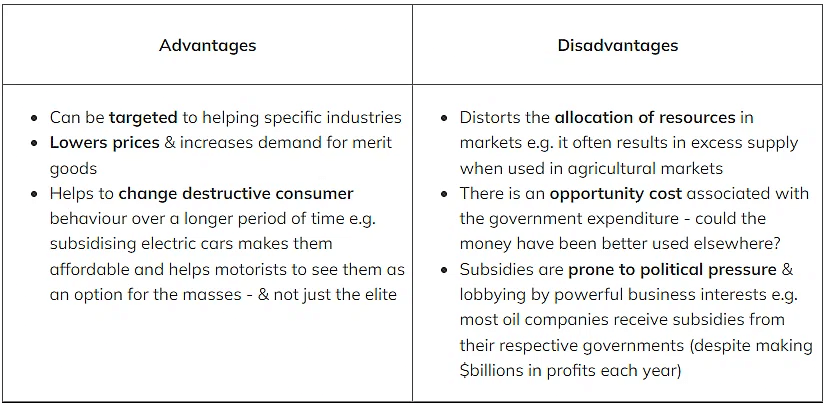
Other Government Policy Measures to Address Market Failure
Other Methods Used to Address Market Failure
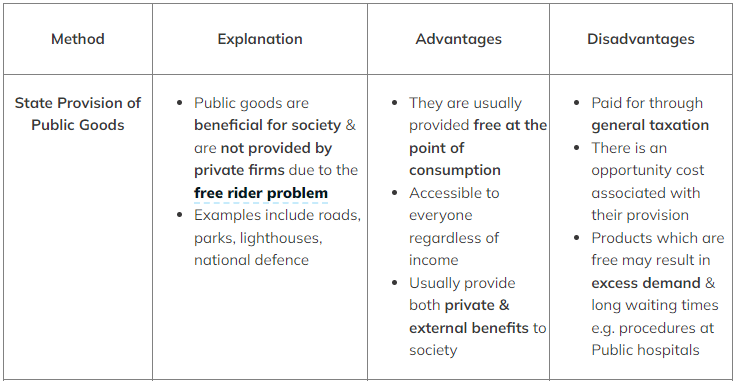
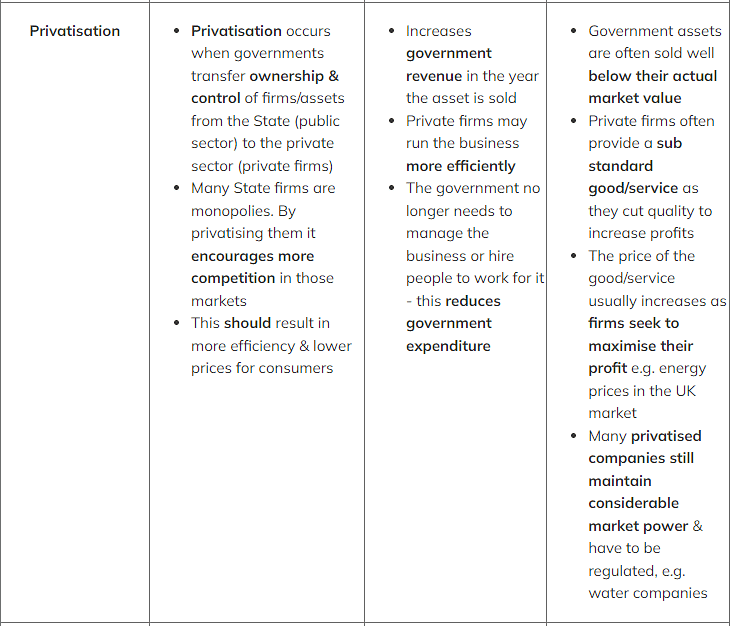
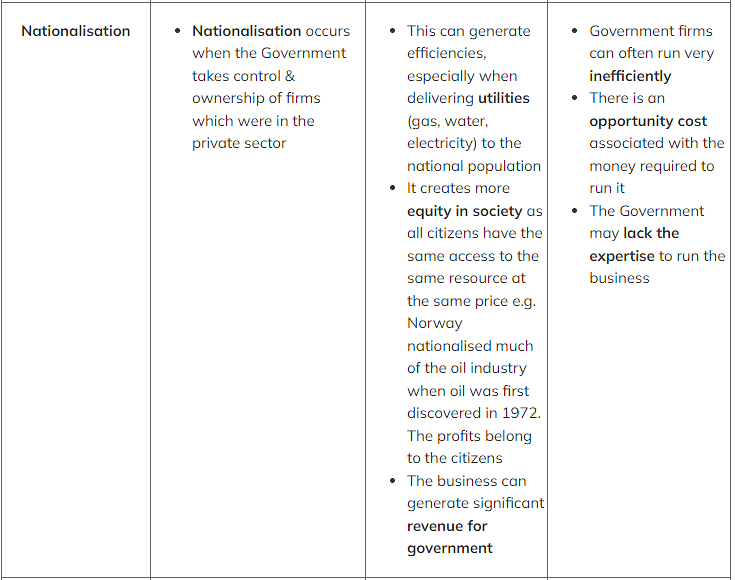
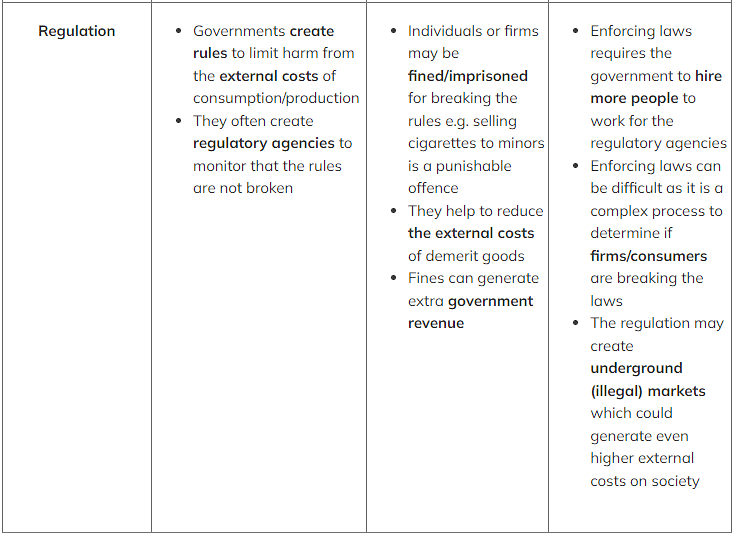
|
23 videos|22 docs|1 tests
|















